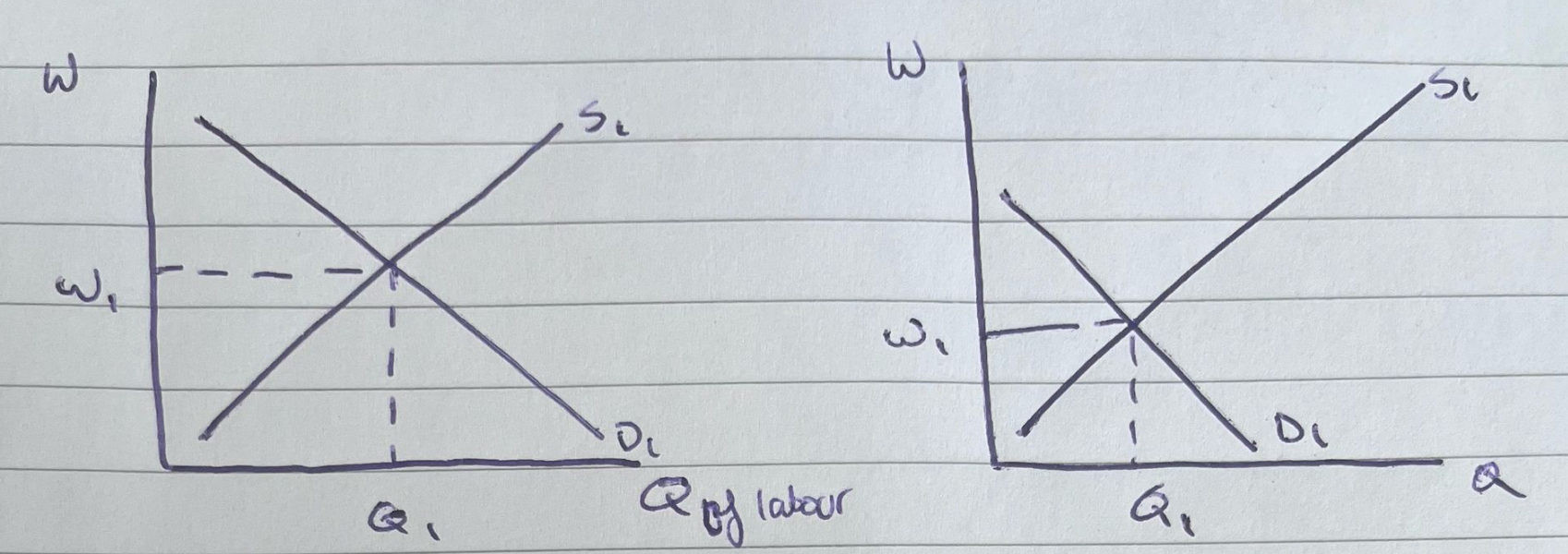Wage Differentials | A-Level Economics Model Paragraph (AQA, Edexcel, OCR)
- Demand for labour: number of workers that firms are willing and able to hire at each given wage
- productivity of workers
- derived demand (demand for final good or service)
- substitutability of capital
- retail workers vs self checkout machine
- Supply of labour: number of workers that are willing and able to work at each given wage
- barriers to entry (skills required)
- wages in substitute jobs
- non-monetary considerations
- children
- value for leisure
- work from home/ commute
Wage differentials are when two people earn different wages for doing different jobs. The equilibrium wage could be different in two different labour markets because of different levels of demand or supply for labour.
One reason for a difference in demand for labour would be a difference in the demand for the final good or service. For example, there could be a different wage rate for male and female footballers because there is a difference in demand for watching male and female football games. As a result, there would a higher demand for male footballers because demand for labour is derived from the demand for the final good or service (tickets or TV subscriptions). Demand for male footballers could also be higher due to greater productivity. Male footballers are able produce greater output per hour, for example in terms of shirt sales, which would also lead to a greater demand and therefore a greater wage rate for them compared to female footballers. Greater demand for labour means firms are willing and able to hire more workers (male footballers) at each given wage.

The diagram shows that there is greater demand for male footballers ceteris paribus (assuming that there is similar supply of labour for both female and male footballers) This leads to a higher equilibrium wage rate for male footballers.
Another example of wage differences could be between teachers and doctors. This could be because of differences in supply of teachers and doctors, assuming there being an equal amount of demand for both. Supply of labour is the number of workers who are willing and able to work at each wage rate. The main factors that could explain the difference in supply for labour are barriers to entry and occupational mobility. It takes more years to train to become a doctor, compared to qualifying as a teacher. Therefore, supply of doctors is likely to be lower than the supply of teachers, as there are less people who are willing and able to work as a doctor for the same given wage. Also, non-monetary considerations affects supply of labour. Both jobs may be stressful but as a doctor's job is arguably more stressful, there would be fewer people who are willing and able to work as a doctor compared to working as a teacher at each wage rate.

The diagram shows that, ceteris paribus, the equilibrium wage for teachers is lower than the equilibrium wage for doctors due to the difference in the level of quantity supplied.